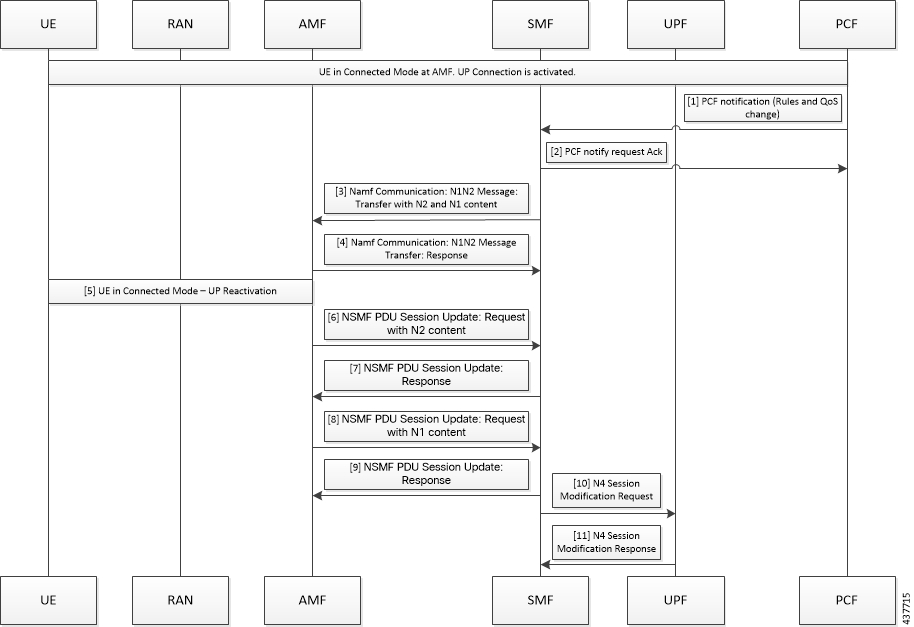| 1 |
The PCF sends the notification towards SMF with policy decision to apply. |
| 2 |
The SMF sends an acknowledgment for the policy notification to the PCF. |
| 3 |
The SMF identifies the changes in QoS model that occur due to policy decision and triggers the NAMF Communication N1 and N2
message transfer toward AMF. This message transfer includes the following details:
N2 includes the PDU session resource modify request transfer IE and N1 includes the PDU session modification request.
|
| 4 |
As UE is in CM-Connected state, the AMF initiates N1 and N2 transfer response. This response includes the “200 OK” status
code and “N1_N2_TRANSFER_INITIATED” cause.
|
| 5 |
The user plane modification procedures begin both towards RAN and UE. |
| 6 |
After receiving a response from RAN, the AMF sends the NSMF PDU Session Update SM Context Request towards the SMF. This request
contains the SM information of the N2 interface.
|
| 7 |
The SMF responds to the AMF with “200 OK” status code for the NSMF PDU Session Update SM Context Request. |
| 8 |
After receiving a response from the UE, the AMF sends the NSMF PDU Session Update SM Context Request toward SMF. This request
contains the SM information of the N1 interface.
|
| 9 |
The SMF responds to the AMF with “200 OK” status code for NSMF PDU Session Update SM Context Request. |
| 10 |
Based on the new QoS information, the SMF initiates the N4 Modification procedure towards the UPF to modify the session. |
| 11 |
The UPF modifies the session and sends the acknowledgment of modification to the SMF. |


 Feedback
Feedback